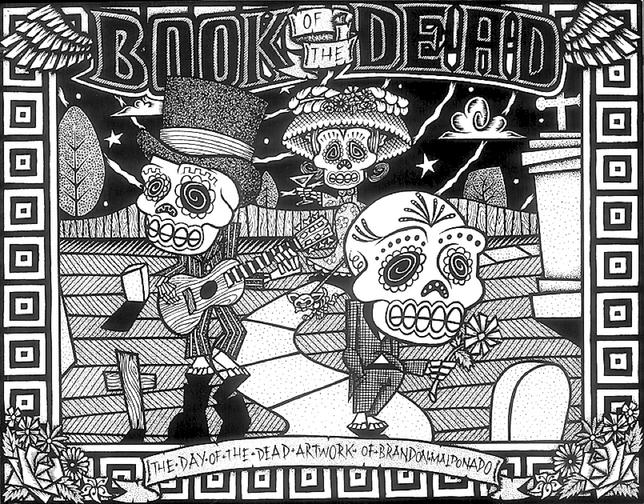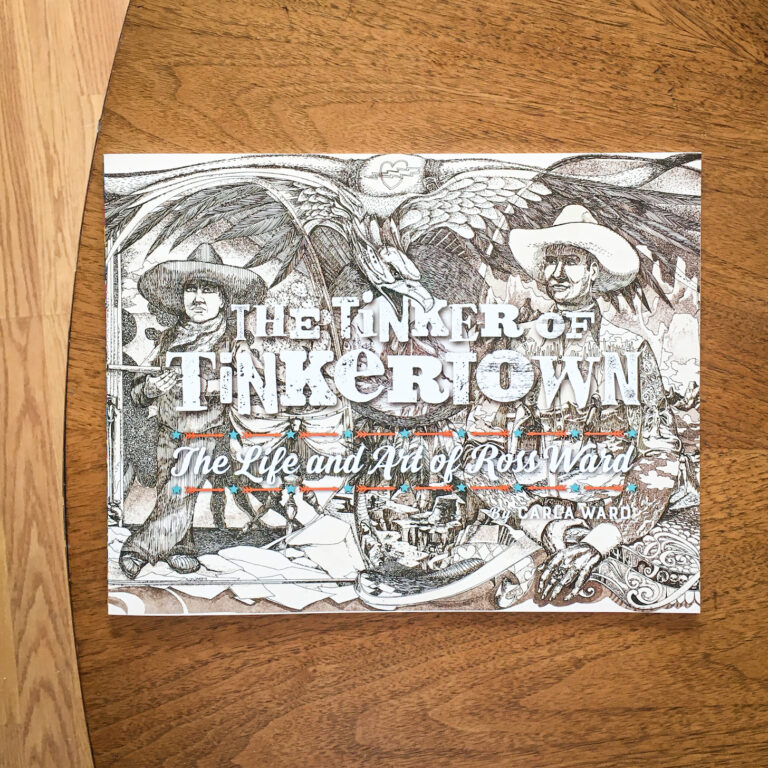Yeah, all right. It was kind of gross. But you've got to hand it to the Mexicans. They stare unblinking into the leering, hideous face of death, and do they turn away? Do they cringe? Do they shudder with fear? No, they do not.
You've got to respect this willingness to acknowledge the central reality of human life: Sooner or later, we all end up dead. Of course, there's no greater testament to Mexico's bravery in the face of death than Día de Los Muertos, Day of the Dead, a holiday that for centuries has given Mexicans an opportunity to honor their dead.
In Book of the Dead, local artist Brandon Maldonado delivers over 30 pieces of spectacular black-and-white Día de los Muertos-inspired artwork in a gorgeous format. High-quality, semi-glossy paper provides the perfect canvas for Maldonado's images. The book itself is a work of art.
Maldonado, who prides himself on having no artistic training, creates funny, macabre ink drawings that are highly reminiscent of José Guadalupe Posada's famous skeletal etchings. Almost all the images depict skeletons with vortex eyes. The book opens with “La Ofrenda,” depicting a scene with a moon in the top left corner and a sun in the top right corner with three bony traditional Día de los Muertos characters—a guitarist, a drunk and a skeleton clutching flowers wrapped in crinkled paper—posing on a flat desert plain.
Throughout the book, the images are consistent but varied enough to remain interesting. Maldonado focuses mainly on iconic Day of the Dead figures—La Catrina, El Bandido, guitarists, mariachis and lots of borrachos (drunks)—but he gives his own subtle twist to each one.
A demonic chihuahua, which serves as the book's unofficial mascot, makes appearances throughout. The book is also enhanced by Sara Lucero's brief but frequently informative commentaries on facing pages.
One drawback is the binding, which didn't hold up very well after repeated viewings. Yet it's still a gorgeous book that's filled with nice touches. I particularly enjoyed the tombstone Maldonado designed for himself at the end of the book with the inscription, “La única cosa segura en la vida es la muerte.” (The only certain thing in life is death.)
Maldonado states in an epigraph that his art “has more to do with life than with death.” This, of course, is true of Mexican “death art” in general. Embracing the inevitability of death is the only way to live every day of our lives to the fullest.









